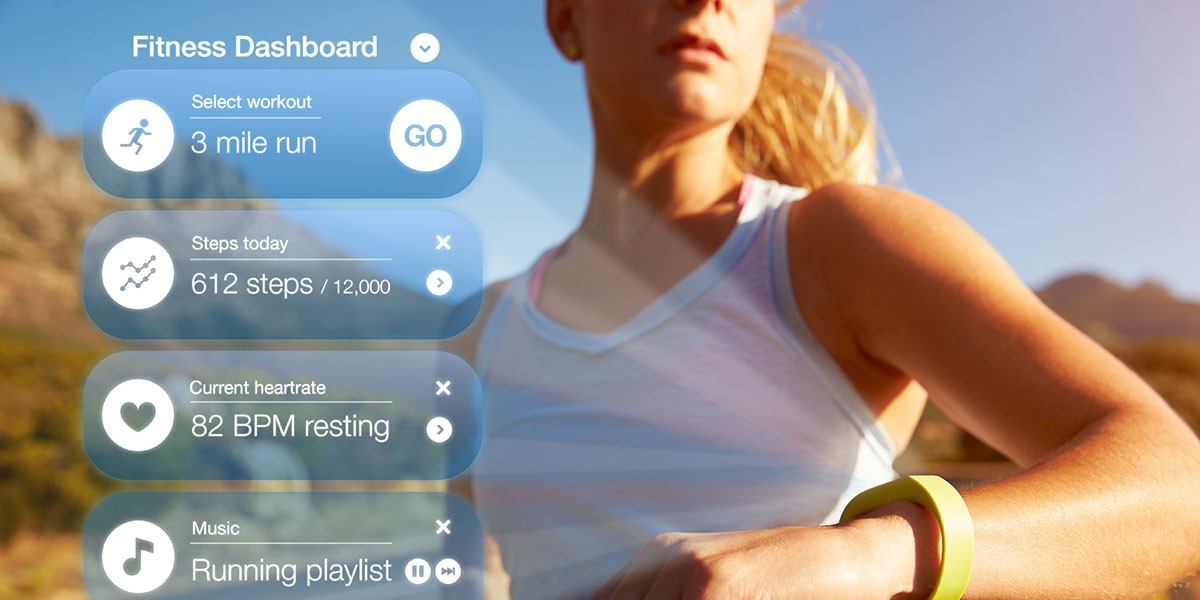Advertisement
Gone are the days of bouncing around your living room dressed like a bumblebee in legwarmers with Jane Fonda instructing you from your cassette player. But is the modern age of fitness apps more effective?
As with (almost) anything in life, if you’re trying to get fit, there’s an app for that.
Phase Fit, a consulting firm specialising in workplace wellness, ergonomics, personal training and digital remote fitness training, CEO Wesley Muir says that there are literally thousands of fitness apps available online, targeting almost every angle of the industry.
Need an incentive to get off the couch and start doing reps? The Discovery app (available free to Discovery members on Apple or Android) promises to give you points, which can be swapped for rewards (think smoothies and coffee, for instance) each time you get moving.
Dying to prove to your friend that you’re faster on the bike? Download Strava onto your wearable or phone. You’ll be able to track your time and progress along a certain route, monitor other people’s times, and get kudos for when you’ve managed a personal best. Think of it (as the manufacturers do) as a social network for cyclists and runners, likes and all.
Advertisement
Want to know the best way to get rid of love handles? Muir says that Kayla Itsines, an Australian personal trainer, has developed an app (free for Apple devices) that is considered the ‘must-have’ among young women. An online version of Itsines’ acclaimed Bikini Body Guide, the app offers everything from 28-minute workouts to meal plans and fitness challenges.
Men looking to build their physique, meanwhile, can turn to Bodybuilding.com, Starting Strength (R139 from iTunes) or StrongLifts 5×5 (free download). All are tailored to boost weight training, with programmes that track progress or devise the best training exercises according to your specific body type and goals.
If it’s healthy eating that’s your concern, Muir suggests downloading MyFitnessPal: a free app that calculates the calories of absolutely everything you’d like to munch on. Simply scan the food you’re eyeing, and the app does the rest – it’s up to you to decide whether or not the indulgence is worth it.
There are, of course, plenty of others. Techradar.com recommends the Nike+ Training Club (free for Apple and Andriod), which presents a range of training programmes targeting strength, endurance and mobility. If HIIT is your thing, Freeletics is the app for you. Into yoga? Check out Daily Yoga (free on Apple and Android).
Clearly, whether you prefer squats or Surya Namaskar (yogic salutes to the sun), you’ll find an app to teach you, guide you, monitor you and, ultimately, help you improve. That’s one area where online fitness has a definite advantage over real life: you can download an entire gym onto your phone, without paying the associated membership fees (especially since most apps, if not free, have significantly lower monthly costs).
What’s more, you’ll be able to train at a time that suits you, rather than waiting until your favourite class is featured on the gym’s timetable – only to find out that it is already full or that you have a meeting that simply cannot be moved.
Because they are regularly updated and revised, you can count on an almost endless supply of fitness inspiration and ideas for new
moves.
The other advantage is that most apps don’t simply show you how to do the moves or even tell you where you are going wrong, as an instructor would: they also keep track of how much stronger, fitter and faster you’re becoming. That’s excellent motivation if you’re struggling to remain focused on your fitness goals, and invaluable information if you’re training for a particular event.
Plus, apps are programmed to help you shift and revise goals.
But does that mean that your device can replace a personal trainer? Not if you’re serious about training, unfortunately, or if you’ve just started out on a new regime. One of the most valuable contributions made by a personal trainer is checking on your body’s stance and position during key moves, or making sure that you haven’t overreached yourself. It’s all very well to have a cyber instructor broadcasting encouraging motivations, but if you’re performing a move incorrectly or doing a workout that’s too advanced for your strength or fitness level, you may put yourself at risk of injury.
What’s more, a personal trainer will eventually get to know the particulars of how your body moves – which is critical, given that everyone has a different range of motion or ability – and can therefore tailor your programme accordingly. This also makes training a more personal experience.
The conclusion? If you’re looking to top up your training, if you’re away from your usual gym or if you’re already well-versed in your activity of choice, you may well benefit from downloading an app. If possible, consider asking a personal trainer to work through it with you before you go it alone, so that you know what you’re in for and whether there are any tricky bits you should be wary of.
On the other hand, if you’re just starting out on a fitness programme, have experienced prior injuries or simply have no idea what a hamstring is, it’s probably advisable to put in some time with a face-to-face trainer.



